The cannabis family, including Indica, Sativa, Ruderalis, and Hybrid, has been adopted for its medicinal and recreational properties for thousands of years. Explore this article to understand how cannabis can help in cancer. Also, have a look at the best cannabis strains for cancer-related symptoms such as pain, fatigue, nausea, appetite loss, and depression.
When we think of the best medical marijuana strain to fight cancer, the medical-grade strain which first comes to our mind is the Harlequin strain; visit the official website to buy pure seeds.
Marijuana consists of dried flowers (or buds), and hashish is a piece of cannabis resin. Different cannabis strains and growing conditions can influence the biologic liveliness of cannabis. Cannabis comprises more than 100 diverse cannabinoids, which are 21-carbon terpenophenolic compounds that render biological effects.
Researchers study cannabis and its synthetic cannabinoids for medicinal properties that can be used to treat different diseases. The cannabinoids delta-9-tetrahydrocannabinol (THC) and cannabidiol (CBD) are the most extensively studied components in the cannabis plant. However, researchers also study other synthetic cannabinoids. The USA has registered Dronabinol and Nabilone (that contains cannabinoids) as Schedule III controlled substances to use for appetite loss, weight loss, and nausea.
Additional studies have assessed medical marijuana for the treatment of pain, cachexia, and anticancer properties.
What is Cancer?
Contents

A healthy cell resembles a dedicated fighter in a unit; it fights with the unit of cells it is in, and if required, it dies with the great purpose of saving the system. This method is called apoptosis in medical jargon, a programmed cell that ensures that dysfunctional cells commit self-destruction. Like a warrior forsaking from his unit, cells can sometimes change and escape apoptosis. This time it becomes dangerous.
For instance, a lung-cell gains the ability to increase and eventually migrate, and these cells are cancerous cells.
Through the blood-stream, the cell can leave the lungs and settle down in some new space, such as the liver, for instance, where it grows bigger. If it develops into metastatic cancer, it spreads to another body part, which can also be called advanced cancer.
Effects of Cannabis and Cannabinoids
Cannabinoids in cannabis are the elements accountable for the ‘drug-like’ effects, and the weed plant is full of them. There are over 144 different cannabinoids in cannabis. The FDA has just endorsed some of these cannabinoids for treating the side effects of cancer treatment. Sythethisezed versions of cannabinoids are there in Dronabinol and Nabilone/Cesamet.
These pills give synthetic forms of THC and are used to treat the vomiting and nausea associated with chemotherapy. However, THC is not the primary useful substance in medical marijuana. The below-mentioned cannabinoids have demonstrated advantages to patients:
- CBC
- CBD
- CBDa
- CBG
- THCA
- THCV
Cannabidiol, generally known as CBD, is the most known cannabinoids for medical users because it relieves pain, decreases uneasiness, and lowers irritation without the psychoactive “high” of THC. Canada has even affirmed an extract called Nabiximols/Sativex that contains both THC and CBD for pain alleviation in those with cutting edge cancer and different sclerosis.
The National Cancer Institute, a US government-sponsored agency, also credits other cannabinoids with reducing irritation, preventing cell growth, preventing blood vessel growth (choking off a tumor’s blood supply), relieving muscle spasms, and fighting viruses.
They also acknowledged that breathed in cannabis improves a patient’s overall well-being and temperament. Other studies have supported the role of medical marijuana in reducing vomiting, providing pain alleviation, stimulating appetite, and improving cancer patients’ sleep. Medical marijuana is also equipped to hinder the growth of specific tumors!
Medical Marijuana and A Revolution in Cancer Treatment
A large number of cancer patients are considering medical marijuana as a possible treatment. Although the FDA has not endorsed cannabis as a remedy for cancer, it hasn’t prevented people with cancer from questioning their doctors about medical marijuana treatment regimen.
As judicial stances toward cannabis revolutionize in the USA, more and more people with cancer are beginning to ponder the ability of cannabis. It’s no mystery that medical marijuana has medical benefits, notably since the US government defended the usage of medical cannabis in a prescribed manner.
In this patent, the government discussed the cell reinforcement properties of cannabinoids, their active chemicals, and their benefits for cancer patients receiving chemotherapy, radiation therapy, or other treatments that cause oxidative stress.
Isolating Cancer Cells and Applying Cannabis Extract
A researcher and his team isolated cells from numerous types and subtypes of cancers and then applied a cannabis extract to the cells. They would not just apply the whole plant extract but also use the smallest mix of cannabinoids to reduce the number of disease cells.
It leaves them with an almost endless blend of disease cells and cannabinoids, and these results are available in the “Cannabis Database Project.” Furthermore, they came to know about more than 800 different cannabis strains, and the researcher has shown that in some cases, the cannabinoid from one strain can take a shot at one type of cancer.
In contrast, the same cannabinoid from another strain does not influence at all. Lastly, if the cannabis plant’s growing conditions change, it can change the cannabinoids. As you can see, we are looking at a riddle with many missing parts.
Will Cannabis Ever Become Beneficial in Cancer Treatment?
Medical marijuana is a useful substance to diminish pain, control nausea and vomiting, and stimulate appetite in individuals with cancer and AIDS. Researchers also report that THC decreases the pressure within the eyes, therefore reducing the severity of glaucoma.
Some supporters guarantee that cannabis has anti-bacterial properties. Besides, it restrains tumor growth and enlarges the airways, which they trust can ease asthma’s hardness.
Others guarantee that cannabis can control seizures and muscle spasms in individuals with epilepsy and spinal line injuries.
As of 2012, there are reports online suggesting that cannabis oil or “hemp” oil can cure cancer. It indicates that it can also cure diabetes, ulcers, arthritis, migraines, insomnia, infections, and numerous other diseases.
One analyst uncovered that his team had discovered three cannabinoids that could almost kill one type of leukemia, leaving doctors and cancer patients with the expectation that cannabis could eventually be a piece of the big puzzle for cancer treatment.
Furthermore, cancer treatments can be personalized according to the cancer patients’ genetic characteristics and the disease subtype. We hope to advance such research to finally come to some firm conclusions regarding cannabis usage in cancer treatment.
The Proportion and Side Effects of THC and CBD
| THC:CBD | Effects |
|---|---|
| 1:0 | Psychoactive effects, uplifting emotions, uncontrollable laugh, more prominent side effects for beginners |
| 2:1 | Laugh and euphoria with more peaceful thoughts, moderate side effects |
| 1:1 | Therapeutic benefits for the peace of mind, very few side effects |
| 1:2 | Mild sedation and body relaxation, weak euphoria effect |
| 0:1 | Antipsychotic and relaxing effects, significant for remedial practice, no high cerebral effects |
Another significant thing to consider is the ratio between CBD and THC. Cannabis produces biphasic effects, which means that its cannabinoids create one effect in small doses and another in a larger amount, making it completed for cancer treatment.
Tetrahydrocannabinol (THC) can make you jumpy in larger quantities and exceptionally carefree and laid back in lower doses. If you’re trying to accomplish a balanced ‘high,’ stick to cannabis strains with low to moderate THC levels.
Top 10 Best Cannabis Strains to Fight Cancer
As we know that the treatment of cancer incorporates intense methods of chemotherapy and radiation, cancer patients may suffer from various conditions, such as loss of appetite, pain, nausea, fatigue, depression, lack of sleep, and many others. To help patients get the right strain for their symptoms, here we’ve listed the top 10 best strains sorted by cancer-related symptoms.
Cnnabis Strains for Appetite Loss
#1 – Super Skunk
- Variety: 80% Indica + 20% Sativa
- THC: Up to 20%
- CBD: Below 1%
Super Skunk cannabis strain is skunky and delivers full-body high. It can be used by cancer patients who suffer loss of appetite due to chemotherapy and radiation. This strain is high in THC with very low levels of CBD, so consuming it in a high dose can create psychoactive effects, which will eventually give pain relief and improve your mood.
Super Skunk is pleasantly sweet that delivers cheesy, skunky, and tangy flavors. Besides, Super Skunk is developed with Skunk #1 and likely bred with Afghani Indica to deliver both physical and mental effects. This cannabis strain is not a cure for cancer but it can give relief in pain, nausea, and appetite loss. Take care of the dose otherwise, it can induce nervousness and hallucinations.
#2 – Granddaddy Purple
- Variety: 100% Indica
- THC: Up to 23%
- CBD: Below 1%
Granddaddy Purple is high in THC and a potent cannabis strain that can assist you in fighting the side effects of chemotherapy, such as appetite loss and nausea. Moreover, it’s a 100% Indica strain that is developed from the Big Bud and Purple Urkle. Besides, it comes with a delicious grape and berry taste that can lure you into its aromatic smell.
Granddaddy Purple is exceptionally famous and can make you relaxed and euphoric at the same time. After smoking this herb, your mind will wander while your body remains idle. It will make you fall asleep if used with a higher dose. Moreover, this strain can manage depression very well.
Apart from that, the Granddaddy Purple may also manage insomnia so cancer patients can get healthy rest. At last, it can improve appetite and helps alleviate nausea and vomiting, making it one of the perfect strains for cancer-related symptoms.
Cannabis Strains for Pain
#3 – Harlequin Cannabis Strain
- Variety: 80% Sativa + 20% Indica
- THC: Up to 7%
- CBD: 10 to 15%
Harlequin is one of the most popular medical cannabis strains with high levels of CBD content. With moderate dose and use, it can effectively treat appetite loss, pain, depression, nausea, and vomiting in cancer patients. Apart from that, this cannabis strain has high limonene and BCP, two potent terpenes perfect for a subtle and lucid effect on cancer patients. It contains moderate amounts of myrcene too, making you relaxed and fall asleep faster.
Furthermore, because of its high CBD level, it’s safe to use during the daytime. You can consume Harlequin and still be able to manage your daily tasks. If you are undergoing chemotherapy, Harlequin can alleviate its side effects, making it one of the excellent cannabis strains for cancer symptoms.
#4 – Blackberry Kush
- Variety: 80% Indica + 20% Sativa
- THC: Up to 20%
- CBD: Below 1%
Blackberry Kush cannabis strain is an Indica-dominant strain that patients enjoy for its euphoric effects. With high levels of THC content of up to 20%, it begins to take effect almost instantly. Blackberry Kush holds some very effective anti-anxiety traits that help user relax. Many people use this strain for their treatments to get relief from undesired symptoms.
The high-THC Blackberry Kush has minimal side effects that include dry mouth, so keep a water bottle nearby. Your tongue will experience sweet blackberry, diesel-like, earthy flavor with each toke. The substantial body high’ from this Kush can elevate your mood, and it may induce hunger after the use. If chemotherapy and radiation cause you pain, this weed is known to give substantial relief.
#5 – Super Silver Haze
- Variety: 90% Sativa + 10% Indica
- THC: Up to 18%
- CBD: Below 1%
Super Silver Haze is a sativa-dominant hybrid that is known to used by many people to get relief in depression and many other medical conditions. This cannabis can help with pain, depressed mood, and many other common mental issues. This award-winning strain is 90% sativa, making it an energetic strain. With high levels of THC of up to 18%, it may induce energetic euphoria.
This strain offers earthy, herbal, and spicy flavors with notes of citrus lingering on your tongue. The medical use of Super Silver Haze includes depression, stress, tension, and pain relief. Suffice to say, it can manage many symptoms of cancer-related treatments. On the other hand, you may remain clear-headed throughout the day with this hybrid strain, making it best for daytime use.
#6 – Bubblegum
- Variety: 50% Indica + 50% Sativa
- THC: Up to 17%
- CBD: Below 1%
Bubblegum strain is a perfectly balanced hybrid (50% Sativa and 50% Indica) strain that contains low level of CBD and nearly 17% THC. This award-winning medical hybrid strain is recommended by many doctors as it can manage many symptoms like pain, nausea, depression, and other common mood disorder issues. The strain has also been proven one of the best for patients who want to get relief even in headaches, migraines, back pain, insomnia, and muscle spasms.
Many medical marijuana dispensaries keep the stash of Bubblegum handy as cancer patients often ask for it to get help in reducing their disease symptoms. It’s one of the well-known strains that may often give relief in cancer-related symptoms like appetite loss and depression by its body numbing and relaxed psychoactive effects.
Cannabis Strains for Nausea
#7 – Northern Lights
- Variety: 90% Indica + 10% Sativa
- THC: Up to 18%
- CBD: Below 1%
Northern Lights renders intense psychoactive effects throughout the body. You’ll feel relaxed and sedative after consuming this high THC Northern Lights strain. Consequently, it can reduce your pain and make you fall asleep. Apart from being medical marijuana, Northern Lights is also being used recreationally worldwide due to its 18% THC content.
Northern Lights can help in nausea, especially for cancer patients on treatment. Furthermore, it can also reduce stress and depression because of its mood-elevating properties. Also, cancer patients can use this cannabis strain to manage insomnia because of its intense relaxing effects. At last, the Northern Lights doesn’t have any adverse effects. The strain can handle the pain, so you can continue doing your work without troubles, headaches, and muscle pains.
#8 – Blue Dream
- Variety: 80% Sativa + 20% Indica
- THC: Up to 21%
- CBD: Up to 2%
The combined power of sweet berry smell and the sedative effect of Blue Dream is known to provide relief to patients with numerous symptoms. Blue Dream is a well-known strain globally that patients often use to get relief in nausea, pain, or depression. The high THC content in this strain may render smooth euphoria that you will enjoy in the daytime. Along with that, the deep fruity blueberry flavor with a hint of mango and vanilla will make your palate juicy with a full berry experience!
Blueberry Indica and Super Silver Haze are the well-known genetics that makes this excellent strain to offer great daytime high. The easy-going euphoria can elevate your mood without making you couch-locked. However, taking it in a higher dose may cause paranoia and anxiety, so always remember to keep the dose low to moderate.
#9 – Cannatonic
- Variety: 50% Indica + 50% Sativa
- THC: Up to 15%
- CBD: Up to 12%
Cannatonic is another perfectly hybrid strain on this list that may give relief to patients with cancer symptoms with its high levels of CBD to THC ratio. The cross-breeding of female MK Ultra and the G13 Haze male results in this medical-grade marijuana. It furnishes citrus, pine, and sour aroma with subtle notes of earthy and woodsy smell that can fill your mouth instantly.
Furthermore, the short and mellow high of Cnnatonic provides soothing sensations that can uplift your mood and render positive thoughts. The 1:1 ratio of THC and CBD will make you relaxed as if a heavyweight has been lifted. Besides, many patients use this strain to seek help for fatigue and loss of appetite due to cancer treatments.
#10 – Pineapple Haze
- Variety: 70% Sativa + 30% Indica
- THC: Up to 19%
- CBD: Below 1%
With enticing effects and rich fruity flavors, high-THC Pineapple Haze is a great daytime strain to experience a spark of creativity and vibrant thoughts. This strain delivers a rush of pineapple flavor, along with hints of woody, earthy, and fruity taste. Moreover, it can deliver a range of positive effects like creativity, euphoria, happiness, relaxation, and upliftedness. However, taking it in high dose may cause dry eyes, dry mouth, and dizziness.
Many cancer patients use this strain to seek help for chronic pain, nausea, fatigue, loss of appetite, and headaches. Plus, it can also effectively manage chronic psychological issues like ADD/ADHD, anxiety, PMS, PTSD, insomnia, stress, and depression. Overall, Pineapple Haze isn’t a cure for cancer but all these traits make Pineapple Haze one of the best medical marijuana strains to fight cancer.
Last Verdict
To eliminate nausea caused by chemotherapy, we suggest Indica or at least Indica-dominant hybrid cannabis strains. You can find help from nerve pain caused by cancer through vaporizing Indica or Indica-dominant hybrid cannabis strain or adding it to your food. On the other hand, the THC and CBD ratio of 1:1 can help you reduce pain, fatigue, and nausea while also encouraging you to fall and stay asleep.
Although much research still needs to be done on cancer and cannabis, previous results show positive effects for treating many chronic diseases and their symptoms. Most of them lean toward medical cannabis, serving as a suitable treatment for patients suffering from different symptoms identified with the side effects of treatments, such as radiation and chemotherapy.
As medical marijuana strains hold magnificent healing properties, we hope that more researches and proofs will get us solutions at some point, and more people can have access to cannabis as effectively as some other pharmaceutical drug.
Before you try any of the best cannabis strains to fight cancer, we recommend consulting your doctor to make sure it’s the right decision for your treatment regimen.
Do you have any vital information regarding cannabis and cancer treatments that you would like to share? Please leave your comments below.
Frequently Asked Questions
Is it better for chemo patients to consume sativa or indica?
In terms of specific conditions, sativa strains are preferable for psychological problems like depression, PTSD, and anxiety. Indicas are frequently the most effective for pain and inflammation, making them ideal for those suffering from arthritis, fibromyalgia, and cancer.
Is dabbing harmful to one’s lungs?
Acute and chronic pulmonary problems have been linked to dabbing BHO. Therefore, we suggest that clinicians consider dabbing-induced hypersensitivity pneumonitis as a differential diagnosis for acute pulmonary infiltrates in BHO-dabbing patients.
Terpenes, are they carcinogenic?
Scientists discovered that terpenes, a chemical component in marijuana, are blamed for the carcinogens produced when smoked or vaporized.
Is CBD oil incompatible with immunotherapy?
Anti-inflammatory drugs may have a detrimental influence on immunotherapy efficacy. Cannabinoids have been shown in various studies to have anti-inflammatory properties. Recent research indicates that cannabis has a harmful influence on tumor response to immunotherapy.
Do terpenes have any adverse effects?
It is critical to specify average concentrations because some terpenes can cause irritation, allergic reaction, nausea, headache, and severe toxic effects at very high doses. However, these doses are much higher than you’d ever consume while using cannabis products, even if you’re mostly lifted.
Is Cannatonic an indica or a sativa strain?
At the 2008 High Times Cannabis Cup, Cannatonic finished third in the Sativa category. Cannatonic, often known as the CBD Queen, is a hybrid of Spain’s Resin Seeds. Cannatonic, a hybrid of Reina Madre and NYC Diesel, was reportedly introduced around 2008 as one of the first high-CBD strains.
Is pineapple indica or sativa?
Overall, Pineapple is a well-balanced cannabis option, which might be attributed to its ideal 50/50 sativa/indica ratio. This strain combines the finest of both worlds, making it easily accessible to a broad spectrum of cannabis consumers.
Is the Pineapple Express a valuable strain for anxiety?
Pineapple Express is a hybrid strain with ancestors in Trainwreck and Hawaiian, a landrace Sativa.
Is Northern Lights a decent cannabis strain?
Given its origins, Northern Lights offers all of the traditional indica effects: mind-body relaxation, a euphoric body high, heightened hunger, sedation, and an overall feel-good condition. Northern Lights is unquestionably a nighttime strain, but it has various possible medicinal advantages.
What kind of marijuana is birthday cake?
Birthday Cake, also known as Birthday Cake Kush or Wedding Cake, is an indica-dominant hybrid with pleasantly well-balanced effects. Its parent strains, Girl Scout Cookies and Cherry Pie, contribute to its sweet-ish, slightly fruity taste profile and euphoric, elevating, and calming effects.


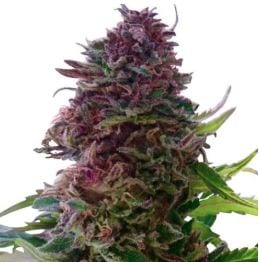

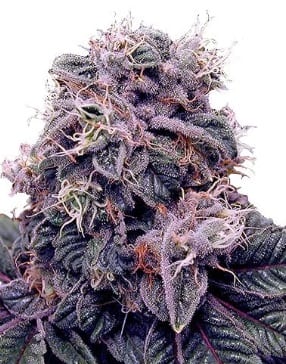

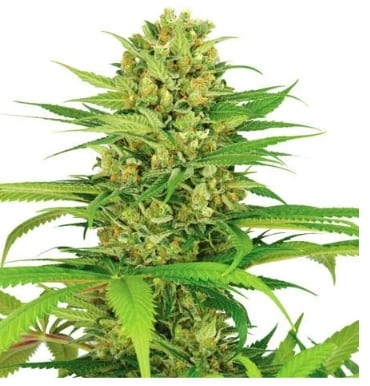
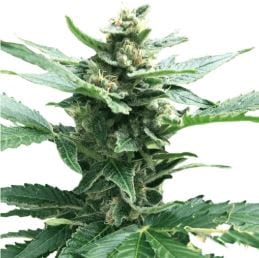
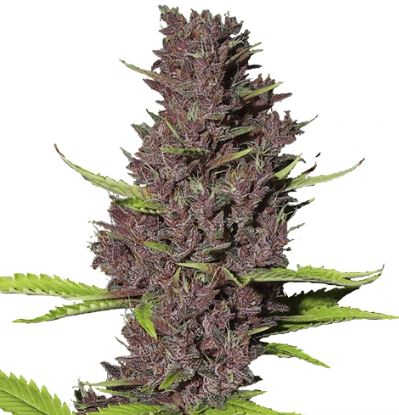
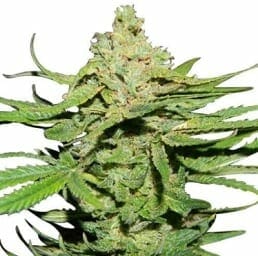


As a 15 year hospice care RN, and 30 more RN years before that, I am thrilled that the clinical use of marijuana is finally starting. Your information is the best I’ve found.
THANKS